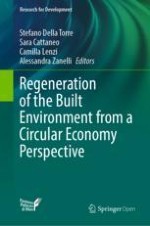
Open Access 2020 | OriginalPaper | Chapter
Bio-Based Materials for the Italian Construction Industry: Buildings as Carbon Sponges
Authors : Olga Beatrice Carcassi, Enrico De Angelis, Giuliana Iannaccone, Laura Elisabetta Malighetti, Gabriele Masera, Francesco Pittau
Published in: Regeneration of the Built Environment from a Circular Economy Perspective
Publisher: Springer International Publishing
Activate our intelligent search to find suitable subject content or patents.
Select sections of text to find matching patents with Artificial Intelligence. powered by
Select sections of text to find additional relevant content using AI-assisted search. powered by